
Shot blasting, a major technology for surface treatment
Shot blasting is an essential technology for surface treatment or surface finishing. As such it offers numerous methods for the mechanical refinement of surfaces. There are dry shot blasting processes as well as wet systems, utilizing a mix of blast media and water or pure water. Dry shot blasting is generally used for surface texturing, deburring, striping of paint and other coatings, de-rusting, de-sanding, descaling and, last but not least, shot peening. Wet blasting is by and large a particularly gentle surface finishing process. Typical applications are the gentle surface cleaning of delicate components, light edge radiusing of, for example, tools and the creation of decorative surface finishes.
In shot blasting processes the abrasive is thrown at the work piece surface with speeds of up to 170 m/s. The kinetic energy required for accelerating the blast media in dry blast systems is generated by blast turbines (blast wheels) and compressed air, whereas in wet blast systems high-pressure pumps are utilized. The blast results generally depend on the machine type, the process parameters and, above all, on the type and size of blast media used for specific shot blasting operations.
What shot blasting systems are available
- In the turbine shot blasting technology the high rotational speed of the so-called blast wheels, also known as turbines, is used for accelerating and throwing the abrasive onto the work piece surface. The most common applications for turbine blast machines are de-rusting, deburring, descaling, de-sanding and surface texturing (making a surface rougher).
- Compressed air blasting is ideal for targeted blasting of relatively small surface areas. It also allows the use of particularly abrasive mineral blast media. Compressed air blasting is also the preferred technology for shot peening.
- In wet blasting systems a mix of blast media and water (a so-called “slurry”) is accelerated by a high-pressure pump. In high pressure water jet blasting a water jet is generated with a pressure of up to 4.000 bar (58.000 psi). Wet and high-pressure water jet blasting are frequently employed in the aerospace industry.
- “Shot peening”, a special shot blasting method, is primarily utilized in the automobile and aerospace industry for components exposed to dynamic operating loads. “Hammering” the work pieces with blast media generates a residual compressive stress in the top surface layers. This increases their resistance against bending and tensile stress and significantly extends their service life.
- Plastic deflashing, another special shot blasting method, is used for de-flashing and deburring of plastic components like duroplastic and some thermoplastic materials. Generally, plastic de-flashing systems demand considerably less energy, and they utilize specialized, rather soft blast media.
What are the most common blast media types
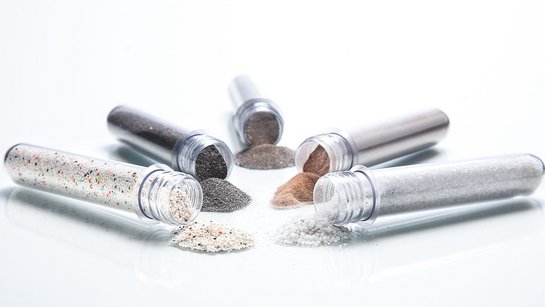
Selection of the most suitable blast media for a given shot blast operation is one of the most important decisions in the process development. The users can choose from a broad range of blast media, some of which can fulfill the same shot blasting tasks. Important selection criteria are the desired blast results, the expected wear rate of the equipment and the cost efficiency of the blast media.
The currently used blast media can be classified as metallic, natural or synthetic mineral materials, natural or synthetic organic materials as well as liquid and gaseous media.
The most common media at a glance:
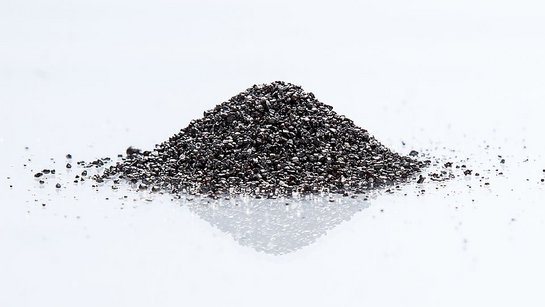
Metallic media made from iron and steel:
- Steel shot (round), steel grit and chilled iron grit are ideal for aggressive surface cleaning, de-rusting, de-scaling, de-sanding, deburring, surface texturing, creating a mat finish and shot peening (only spherical media). They can be used in turbine blast machines as well as in compressed air suction (injection) or pressure blast systems.
- Cut wire blast media in different shapes (cylindrical, rounded edges, nearly round or completely round) are used for general cleaning, de-rusting, de-scaling, de-sanding, deburring/slight edge radiusing and, frequently, shot peening. Cut wire media are suitable for turbine as well as compressed air suction (injection) and pressure blast systems.
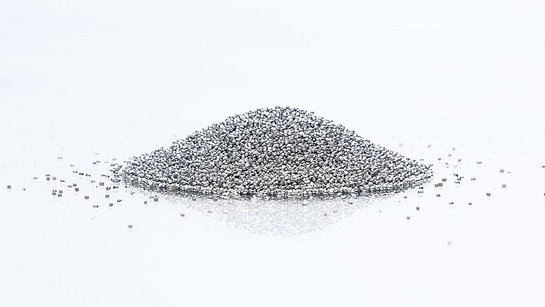
Stainless steel blast media:
- Cast stainless steel shot (perfectly or partially round) and grit are suitable for surface cleaning, de-scaling, de-sanding, deburring/slight edge radiusing, surface texturing, creating a mat finish and shot peening (only spherical media). They can be used in turbine as well as compressed air suction (injection) and pressure blast systems.
- Cut wire stainless steel media (cylindrical, rounded edges, nearly round or completely round) are used for de-scaling and, frequently, shot peening. They can be used in turbine as well as compressed air suction (injection) and pressure blast systems.
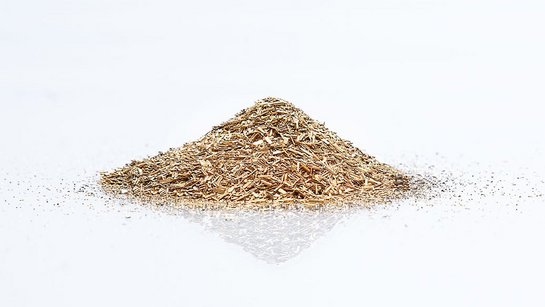
Mineral – non-ferrous blast media:
- Brass swarf, small brass pellets, brass cut wire, aluminum granules, aluminum cut wire, zinc granules and zinc cut wire are used for surface cleaning and deburring. They can be used in turbine as well as compressed air suction (injection) and pressure blast systems.
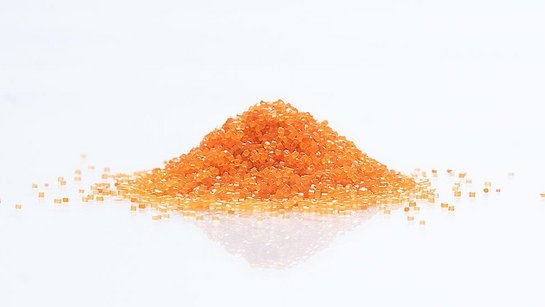
Natural mineral blast media:
- Garnet, soda, potassium sulfate and quartz sand are suitable for paint stripping, de-scaling, de-rusting. surface cleaning, creating a mat finish and deburring. They can be used in compressed air suction (injection) and pressure blast machines as well as in wet and high-pressure water jet blast systems. However, in case of quartz sand this is only partially true: In many countries, also in Germany, the blasting with quartz sand is prohibited, because it represents a serious health hazard in the form of silicosis lung disease.
The most common shot blast machines
Which shot blast machine is most suitable for treating certain work pieces must be determined individually for every application. But the shot blast system as such is only one factor of many. The user must also decide between processing of complete batches of small to very small, mass-produced parts or single piece processing. Typical batch systems are tumble belt machines and multi-tumblers. Spinner hanger blast machines can be used for single piece as well as batch processing of somewhat larger work pieces. 90 out of 100 blast machines leaving our factories are custom engineered to precisely meet the customer requirements. Most common are roller conveyor and wire mesh belt shot blast machines, which can be used for a wide variety of shot blast applications.
Rösler sells mostly wheel, respectively, turbine blast machines. Whenever large surface areas must be treated, they represent the most cost-efficient solution. Moreover, with turbine blast machines the capital expenditures and operating costs in relation to the achievable throughput are relatively small.



